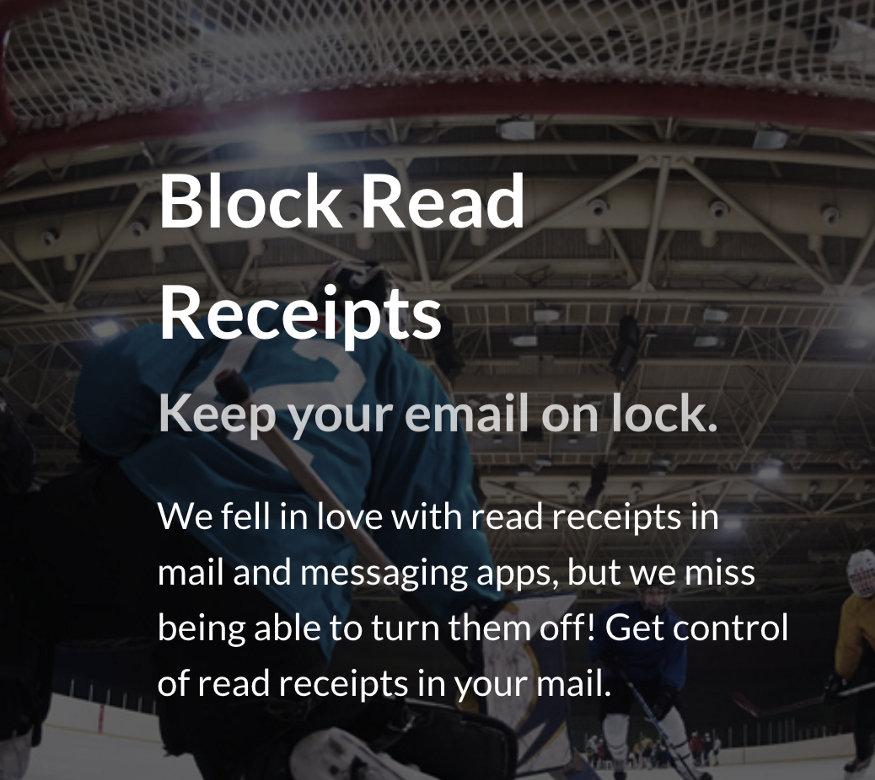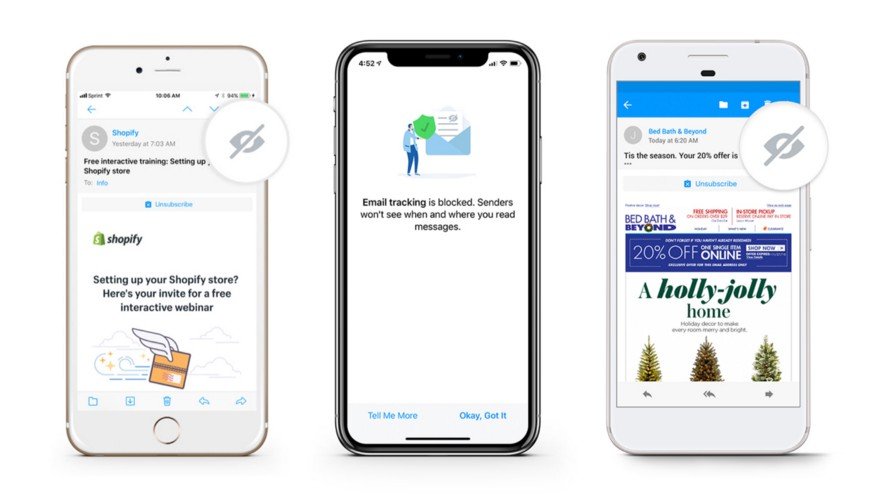Don’t Use Email Without a Read Receipt Blocker
How to stop senders from tracking your email activity
Hidden read receipts are secretly in many of the emails you receive every day, and automatically alert the email sender when you opened it, the device used to open it, and can now begin to target you for ads.
Edison Mail has been automatically blocking these read receipts since 2016, ensuring that your inbox stays private.
It’s Monday morning and, as usual, you open your email to catch up and clear out your mailbox to get the ball rolling on your week. You start skimming subject lines and begin deleting an array of messages that you can tell at a glance are marketing and sales pitches from senders you don’t know, feeling a jolt of accomplishment as you do.
Little do you know, most of those marketing messages in your inbox have a silent spy embedded in them to monitor you.
As soon you open one of those emails (even to delete it), you have unknowingly triggered a cascade of events that will result in additional future emails from that sender to boomerang back into your mailbox.
Unbeknownst to you, the email sender has been waiting for you to open their message, and is now collecting the time of your email reading habits, making note that you expressed interest in their subject matter, and even the device you use at that time of day. You also do not realize that if you used your mobile app to access the message (as 70% of us that use our mobile email app do) you are now also in danger of getting a call directly from the very same mail sender.
It gets worse.
Simply by opening that message with its silent spy embedded, the email sender can now also start targeting you through advertising via Facebook, Search, and other web properties.
The spies in your email we are referring to are called Read Receipts (read more general information about them at the end of this post). You may have heard about them in the news this week.
Unfortunately, many email services and apps are making automated read receipts a standard feature for consumers to access and track the activity of the recipients they send email messages — even though functionality does already exist to request read and/or delivery receipts for all messages that you send, with a mail recipient’s permission.
So, what can you do about it?
Since its debut in 2016, our Edison Mail app has offered consumers built-in protection against this nature of targeting via our email app’s ability to automatically block read receipts from being sent back to anyone attempting to track you via their message.
The founders of our app have always worked to prevent consumers from being personally targeted, which is why Edison Mail’s block read receipt feature operates in the background of the app (on both iOS and on Android), always running.
Here’s how it works: Block Read Receipts removes invisible pixels to prevent sending http requests to the tracking server. Edison Mail can block most major tracking mechanisms. Our app detects invisible images or videos based on their unique pattern and we remove them from the email body before the email is opened. If an email recipient opens, replies or forwards the email, the tracker is already removed.
Edison Mail blocks read receipts universally, regardless of the mail provider or service an email is sent from. Nearly all marketing and promotional emails sent to consumers have read receipt tracking embedded in them. When using other third party mail apps that offer read receipt tracking, personal emails sent to consumers also have tracking embedded.
Our CEO at Edison, Mikael Berner, believes this is an important protection for consumers, now more than ever, saying, “Read receipts are just another way that companies claiming to protect consumer privacy end up targeting people in a very personal way. From day one almost four years ago, unlike other email app developers, our team at Edison Mail offered consumers the built-in ability to block read receipts. We set out to build the best mail app possible that’s free for consumers to use, and does not subject you to invasive tracking and targeting.”
Read Receipts Tracking — A Minor Symptom of a Systemic Problem
The pervasiveness of read receipts are a minor symptom of a systemic problem that consumers and regulators are only beginning to understand. More companies than ever — predominantly ad-based internet products that most of us have become accustomed to rely on — must constantly invade consumer’s personal space with personalized and targeted advertisements, because there is no end to the number of eyeballs and clicks needed for them to grow and for their business models to be viable.
At Edison, our mission is to provide an independent and free email app that is NOT backed by an ad-based business model. There are two reasons why this mission is critical — 1) consumers need to have a choice for a free email app that is viable in the long term and 2) the business model of a free product should not influence consumers’ behavior beyond the natural use of that product. We believe our research backed business model solves these problems.
The purpose of the data we collect for research is to observe and count e-commerce purchases with the emphasis on being unbiased and without influence. It helps facilitate learning about consumer demand after a purchase has been made and some examples of the research we create is available at Edison Trends. Conversely, the purpose of data that companies collect for ads is to help target, influence, and change behavior (i.e. click more ads, buy more of these products, read this article from search results, watch this video, upload more pins, etc.) of the exact same consumers that use their free products.
Edison is Truste certified, GDPR compliant, Privacy Shield certified and is preparing to become CCPA compliant by the end of 2019. Learn more about our privacy commitments here.
Our team at Edison hopes that more consumers will take the time to learn about companies like us to understand the difference between our mail product and others that are less hesitant to infringe on their own user’s privacy. In the meantime, we will continue to put privacy first at Edison, including we never target our users for ads and prevent other companies from tracking them in our app.
If you’re not familiar with Read Receipts, here is more general information about them.
What exactly is a read receipt?
Also known as pixel tracking, at its most innocuous, read receipts tell the sender whether or not you’ve opened a message (think of the opt-in read receipts found on iMessage). At its most malicious, the sender then receives the time when you opened it, your location when you did, and the type of device you read it on. At the end of the day, it’s another way companies and individuals can invade your privacy by tracking your online activity.
Who uses read receipts and why?
Many companies utilize it as a way to track interest from customers via their customer relationship management (CRM) software in an effort to drive business sales. Often with such CRM software, businesses are able to utilize pixel tracking to an even more invasive degree. Beyond the normal invasiveness found in pixel tracking, companies are also able to tell how long the receiver spent on attachments, and which links were clicked.
Download the Edison Mail App Today
Learn more about how you can use Edison Mail for iOS, Mac, and Android to their fullest potential. Reduce spam, and access your favorite email services like Gmail, Yahoo, Microsoft Exchange, Comcast, and more in a clean unified inbox.








